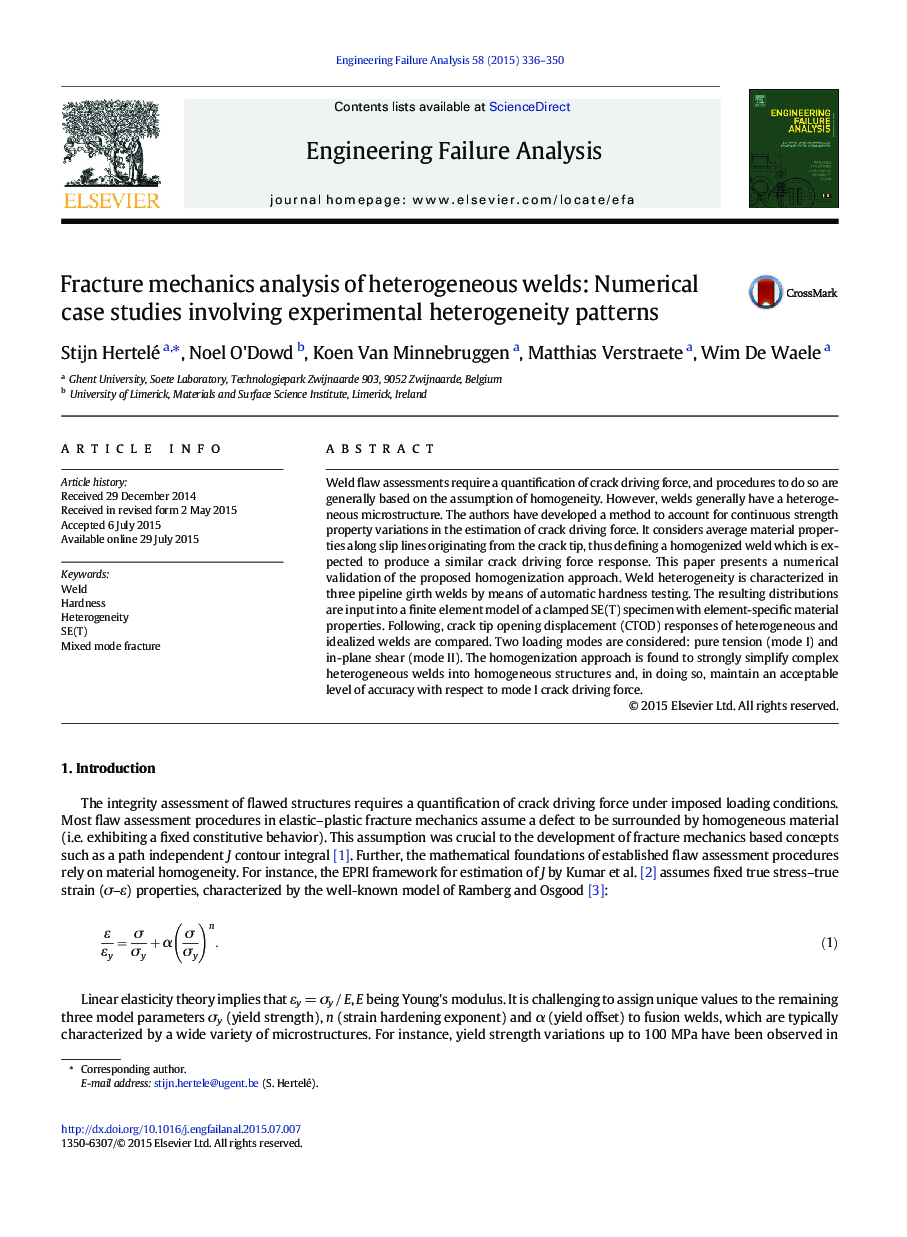| Article ID | Journal | Published Year | Pages | File Type |
|---|---|---|---|---|
| 768424 | Engineering Failure Analysis | 2015 | 15 Pages |
•Three strongly heterogeneous girth welds have been Vickers hardness mapped.•SE(T) specimen is considered to investigate their CTOD responses.•Hardness maps are input into finite element model with element-specific properties.•Welds can be ‘homogenized’ using a recently developed procedure.•Mode I crack driving force is properly estimated, mode II is not.
Weld flaw assessments require a quantification of crack driving force, and procedures to do so are generally based on the assumption of homogeneity. However, welds generally have a heterogeneous microstructure. The authors have developed a method to account for continuous strength property variations in the estimation of crack driving force. It considers average material properties along slip lines originating from the crack tip, thus defining a homogenized weld which is expected to produce a similar crack driving force response. This paper presents a numerical validation of the proposed homogenization approach. Weld heterogeneity is characterized in three pipeline girth welds by means of automatic hardness testing. The resulting distributions are input into a finite element model of a clamped SE(T) specimen with element-specific material properties. Following, crack tip opening displacement (CTOD) responses of heterogeneous and idealized welds are compared. Two loading modes are considered: pure tension (mode I) and in-plane shear (mode II). The homogenization approach is found to strongly simplify complex heterogeneous welds into homogeneous structures and, in doing so, maintain an acceptable level of accuracy with respect to mode I crack driving force.
